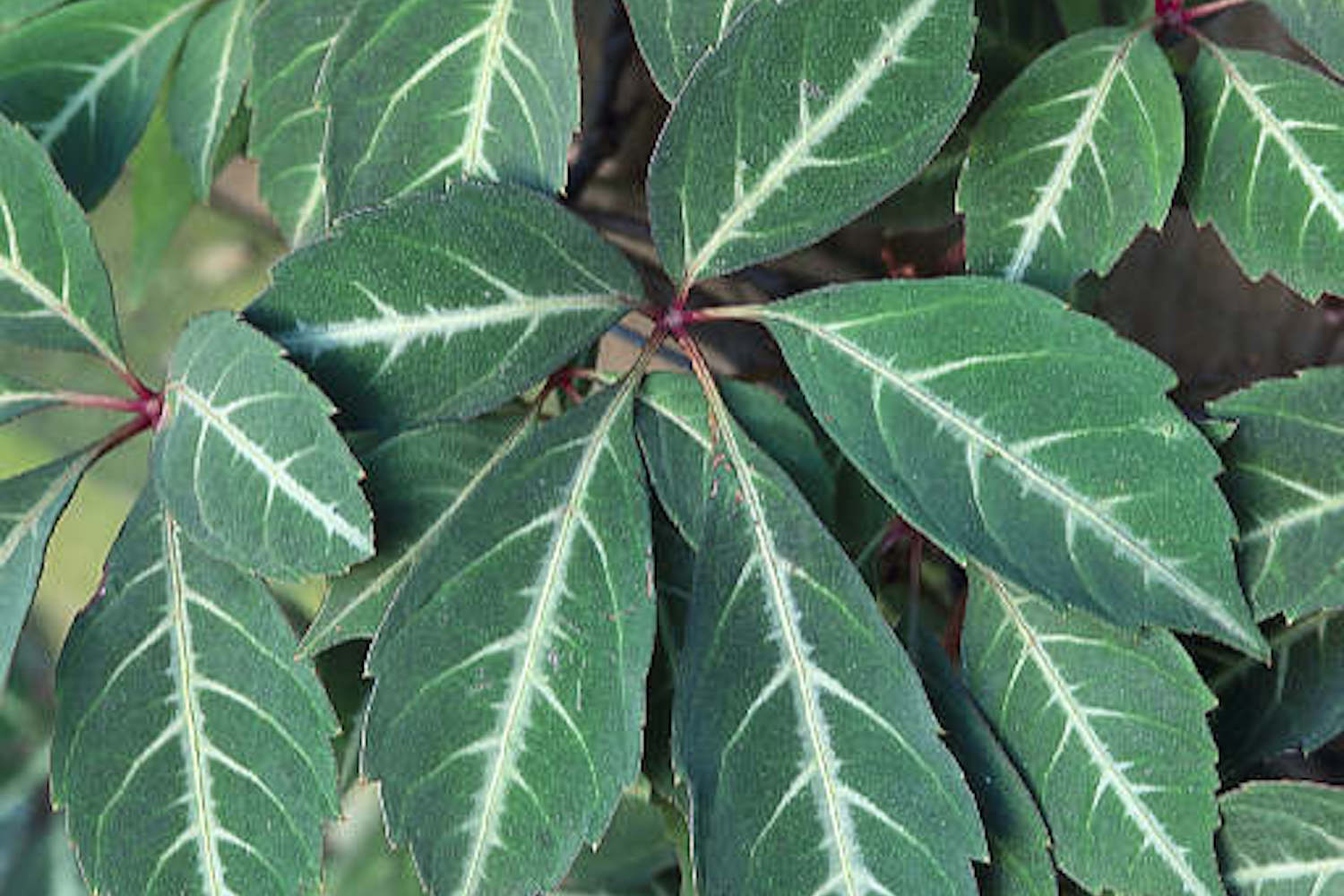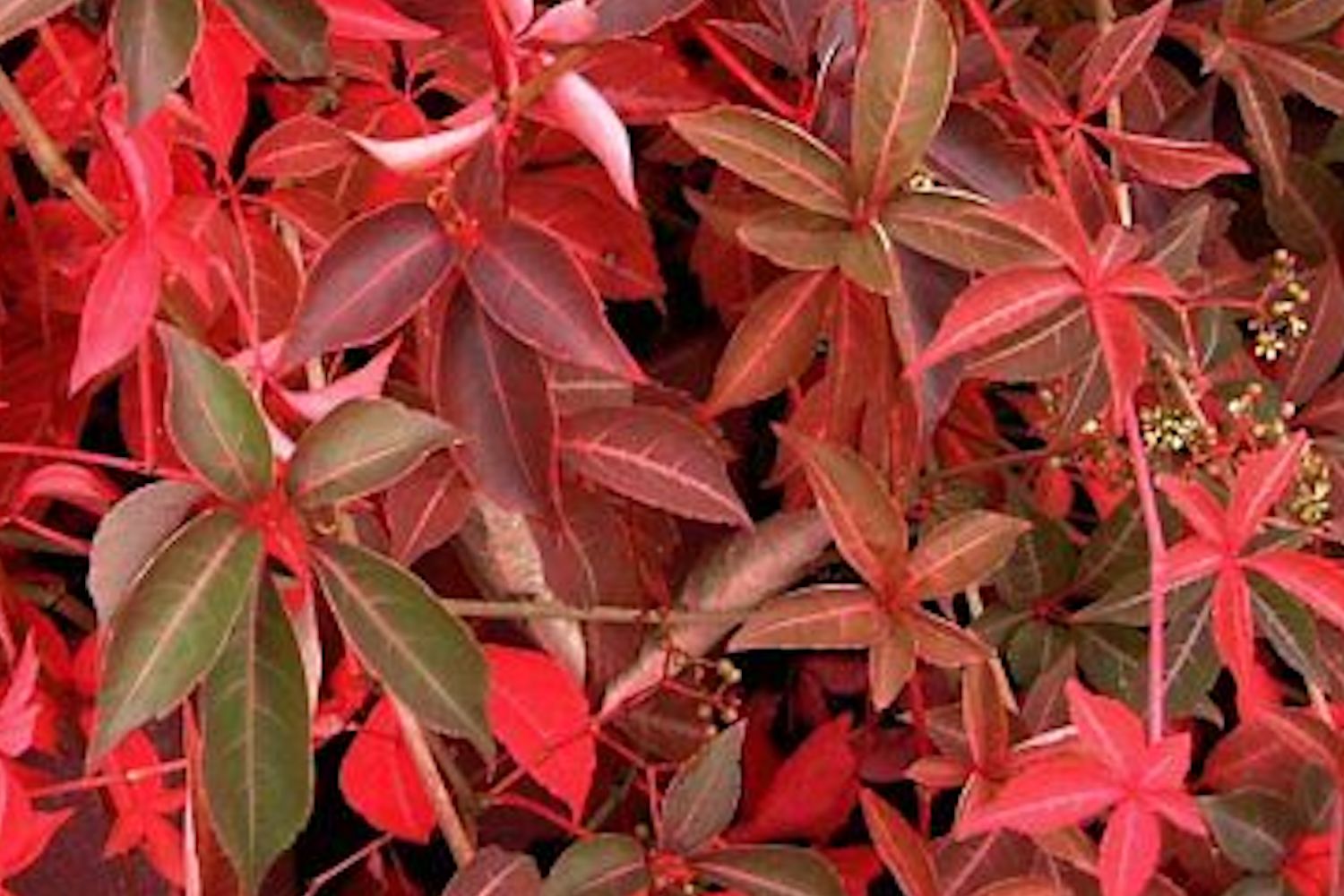Parthenocissus henryana
Approx. 0.5 litre pot
About this cultivar:
Parthenocissus henryana has a more restrained growth than the other Virginia creepers. This climber has large palmate leaves consisting of five to nine oval leaflets with strong white veining. For some reason the leaves always remind me of hands, so it looks like hand climbing up a wall...maybe thats just me, but I like that idea.
The leaves colour to a brilliant red in autumn before falling and clusters of inconspicuous flowers in summer may be followed by black fruits. You can also experiment with using it as ground cover... I even found someone using it for bonsai (here)
The species name refers too the Irish plant collector Augustine Henry (1857–1930) who discovered the species on his tour of Central China in the 1880s. It was introduced to Great Britain by another great plant collector, Ernest Henry Wilson, in 1903.
- Position: Full sun, partial shade
- Soil: Almost any soil, grows well in Ballyrobert
- Flowers: June, July
- Other features: Royal Horticultural Society Award of Garden Merit (RHS AGM), Interesting Foliage or Fruit
- Hardiness: H5 - Hardy in most places throughout the UK even in severe winters (-15 to -10°C), Fully hardy, grows well in Ballyrobert
- Habit: Climbing
- Foliage: Deciduous
- Height: 360 - 450 cm (12 - 15 ft)
- Spread: 360 - 450 cm (12 - 15 ft)
- Time to full growth: 5 to 10 years
- Plant type: Herbaceous Perennial, Climber
- Colour: Green, red, purple
- Goes well with: --
About this genus:
Parthenocissus contains only 12 or so vining species, some of which are very popular ornamental plants. The name derives from the Greek parthenos, virgin, and kissos (Latinized as cissus), ivy. The reason is variously given as the ability of these creepers to form seeds without pollination or the English name of the quinquefolia species; Virginia creeper, which has become attached to the whole genus.
Boston Ivy is the common name given to the tricuspidata species, popular for covering the façades of houses. However, Parthenocissus is neither from Boston nor is it a real ivy! Instead, Parthenocissus is a relative of grapes (Vitaceae) and is native to both eastern Asia and the eastern US. The species was tricuspidata was surprisingly not introduced into Europe or the US until 1862 by the plant hunter John Gould Veitch.
Parthenocissus vines are fast growing and usually quite tall. Parthenocissus are deciduous and many have nice autumn leaf colour in shades of red or purple. Although the white flowers are not particularily showy, some of the species have attractive purple, miniature-grape-like fruits.
If you want to grow parthenocissus on a wall for its cooling effect, be aware that it clings to walls via sticky holdfasts, which do not penetrate the wall (a good thing) are very hard to remove and can damage siding if simply ripped off (a bad thing). The trick is to cut the vine from the holdfasts and let them naturally deteriorate and fall off over the course of a few years.
As for conditions they'll grow almost anywhere that isn't a pond!






